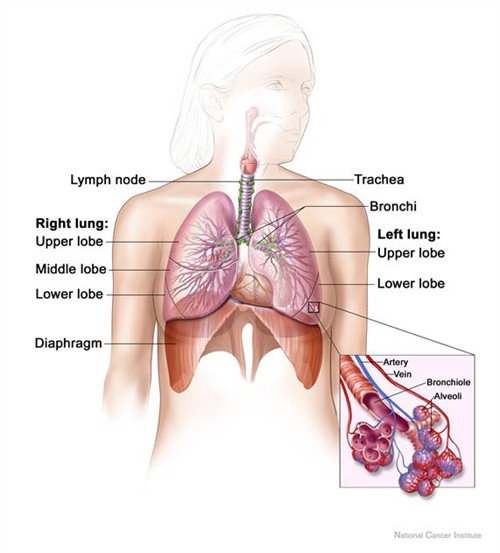Many physical therapists refer to the deepest muscles located in the region between our pelvis and diaphragm as "the inner core" muscles. When we help patients train and strengthen these muscles, we focus on the following: the breathing diaphragm in the upper most part of the core; the deep and superficial muscles of the pelvic floor located in our pelvis; the transversus abdominis in the front abdominal muscle wall; and the deep lumbosacral multifidi in the low back.
The breathing diaphragm is a dome shaped muscle in our chest. It connects to the mid and lower ribs as well as several other structures. Here it is in its relaxed state, following an exhalation of air:
 |
| https://commons.wikimedia.org/wiki/File:Lung_and_diaphragm.jpg |
When you inhale, your chest cage expands and your diaphragm contracts and flattens out. When you exhale, your chest cage contracts and your diaphragm relaxes:
![By OpenStax College [CC BY 3.0 (http://creativecommons.org/licenses/by/3.0)], via Wikimedia Commons](https://frcemsuccess.com/wp-content/uploads/2017/01/Respiration-1024x756.jpg) |
| https://frcemsuccess.com/respiration/ |
The pelvic floor muscles span the bottom of the pelvis. They consist of a superficial and a deep layer and help support our pelvic organs. Beside their important role in bowel and bladder control, they also work with the other deep muscles of the inner core to provide stability in the low back, pelvis, and hip when we move. It is fairly common to find dysfunction in these muscles with clients who have bowel and bladder problems as well as pain in their low back, pelvis, or hip region.
Here is a picture looking down at the pelvic floor from above:
 |
| PelvicGuru.com |
The transversus abdominis is the deepest muscle in our abdominal wall and wraps around the abdomen horizontally. Physical therapists and wellness professionals often refer to it as “the TA” or the “deep abdominals.” Most of our clients are not as familiar with this muscle as they are with the external obliques, internal obliques, and rectus abdominis ("6 pack muscle"), which lie more superficial to the transversus abdominis.
 |
| PelvicGuru.com |
The deepest muscles in our back, the deep lumbosacral multifidi, connect one vertebra to another in the spine and span one to two intervertebral segments down to the sacrum and pelvis. These muscles play a large roll in controlling shear and torsional stresses in the spine and sacroiliac joints (“SI joints”), which is important for spinal and SI joint stability for those clients who have too much mobility in these regions.
 |
| https://en.wikipedia.org/wiki/Multifidus_muscle |
To learn more about an appropriate training program for the deep muscle system, please refer to my blog post, A Training Program for the Deep Muscle System ("Inner Core"). If you have questions regarding your inner core muscles, please consult your physical therapist.